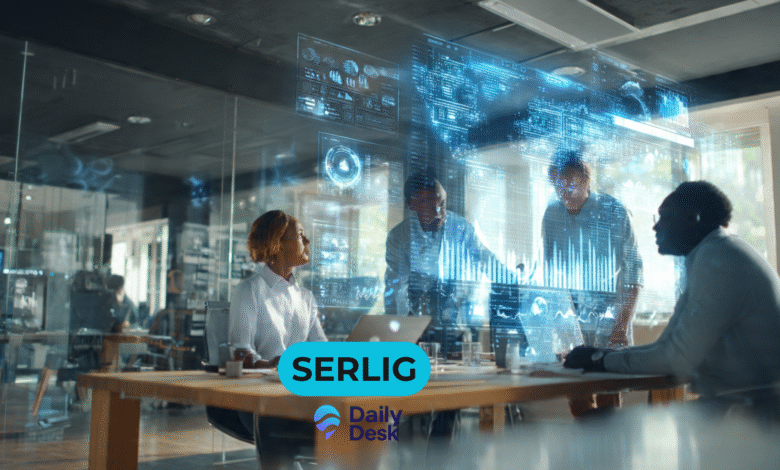Serlig: Unlocking Innovation and Adaptability in the Modern World

In today’s rapidly evolving digital landscape, innovative concepts emerge that reshape how we approach business, technology, and personal growth. Serlig has become one such transformative concept, capturing attention across industries and communities worldwide. This powerful framework represents more than just a buzzword—it embodies the spirit of adaptability and forward-thinking solutions.
Understanding Serlig requires looking beyond surface definitions to grasp its deeper significance in our interconnected world. Whether you’re an entrepreneur, tech enthusiast, or someone seeking personal development, this concept offers valuable insights. The principles behind Serlig can revolutionize how you approach challenges and opportunities in both professional and personal spheres.
What Makes Serlig Different?
The term Serlig stands out because it transcends traditional boundaries between innovation and practical application. Unlike rigid methodologies, it emphasizes flexibility and responsiveness to changing circumstances. This adaptive approach makes it particularly relevant in an era where disruption has become the norm rather than the exception.
At its core, Serlig represents a mindset shift toward embracing complexity while maintaining simplicity. It encourages individuals and organizations to build systems that can evolve without losing their fundamental purpose. This balance between stability and innovation creates sustainable pathways for growth.
The Origins and Evolution of Serlig
The journey of Serlig from obscurity to recognition mirrors many transformative concepts in modern history. Initially known within specialized circles, it gradually gained traction as more people recognized its practical value. The concept evolved organically through community discussions and real-world applications.
Today’s interpretation of Serlig reflects contributions from diverse fields including technology, business strategy, and personal development. This cross-pollination of ideas has enriched its meaning and expanded its applicability. The evolution continues as new practitioners add their insights and experiences to the growing body of knowledge.
Core Principles That Define Serlig
Several fundamental principles form the foundation of what makes Serlig effective and relevant. Understanding these principles helps practitioners apply the concept successfully across different contexts. Each principle contributes to creating a holistic framework for addressing modern challenges.
Adaptability stands as perhaps the most crucial element within Serlig philosophy. The ability to pivot and adjust strategies based on changing circumstances separates successful implementations from failed attempts. This flexibility doesn’t mean lacking direction—rather, it means maintaining focus while adjusting methods.
Innovation Through Serlig Methodology
Innovation forms the beating heart of every Serlig-inspired initiative. The methodology encourages experimentation and creative problem-solving without fear of failure. By reframing setbacks as learning opportunities, Serlig creates environments where breakthrough ideas can flourish.
The innovative aspect of Serlig extends beyond product development into process improvement and organizational culture. Companies embracing this approach often find themselves ahead of competitors who stick to conventional methods. Innovation becomes embedded in daily operations rather than remaining isolated in research departments.
Serlig in Business Transformation
Modern businesses face unprecedented challenges requiring fresh approaches to strategy and execution. Serlig offers a framework for navigating uncertainty while maintaining competitive advantages. Organizations implementing these principles report improved resilience and market responsiveness.
The business applications of Serlig span multiple functions from leadership to operations. Strategic planning becomes more dynamic when infused with these principles. Companies develop the agility needed to capitalize on emerging opportunities while mitigating potential threats.
Technology Integration and Serlig
The technology sector has proven particularly receptive to Serlig-based approaches. Software development teams use these principles to create more user-friendly and adaptable systems. Integration challenges that once seemed insurmountable become manageable through this framework.
Cloud computing, artificial intelligence, and automation all align naturally with Serlig philosophy. These technologies thrive when implemented with flexibility and innovation in mind. The synergy between cutting-edge technology and this adaptive methodology produces powerful results.
Personal Development Through Serlig
Beyond organizational applications, Serlig offers profound benefits for individual growth and development. People adopting this mindset report greater satisfaction and achievement in their personal goals. The principles translate effectively from boardrooms to everyday life situations.
Personal application of Serlig involves cultivating adaptability in thinking patterns and behaviors. It means remaining open to new ideas while maintaining core values. This balance enables continuous learning without losing one’s authentic identity or direction.
Building a Serlig-Oriented Culture
Creating an environment where these principles can thrive requires intentional effort and commitment. Leaders must model the behaviors they wish to see throughout their organizations. Cultural transformation happens gradually through consistent reinforcement of core values.
A Serlig-oriented culture celebrates experimentation and supports calculated risk-taking. Team members feel empowered to propose innovative solutions without fear of punishment for honest mistakes. This psychological safety proves essential for unlocking collective creativity and problem-solving capabilities.
Practical Implementation Strategies
Translating Serlig concepts into actionable steps requires careful planning and execution. Start by identifying areas where flexibility and innovation could yield the greatest benefits. Small pilot projects allow testing ideas before committing significant resources.
Implementation success depends on clear communication and stakeholder buy-in at all levels. Training programs help team members understand and embrace new approaches. Regular feedback loops ensure continuous refinement of methods based on real-world results.
Overcoming Common Obstacles
Every transformative initiative faces resistance and challenges during implementation. Understanding potential obstacles helps practitioners prepare effective responses. Many barriers stem from deeply ingrained habits and organizational inertia rather than legitimate concerns.
Change management techniques prove invaluable when introducing Serlig principles to established organizations. Patience and persistence overcome initial skepticism as early successes demonstrate value. Building momentum through quick wins creates enthusiasm for broader transformation efforts.
Measuring Serlig Success
Quantifying the impact of these principles requires both traditional metrics and new measurement approaches. Financial performance remains important but shouldn’t overshadow qualitative indicators of cultural shift. Employee engagement and customer satisfaction often improve before financial results reflect changes.
Establishing baseline measurements before implementation enables accurate assessment of progress over time. Regular evaluation helps identify what works well and what needs adjustment. Success metrics should align with organizational goals while capturing the nuanced benefits these principles provide.
The Role of Leadership in Serlig
Effective leadership makes or breaks any attempt to implement these transformative concepts. Leaders must embody the principles they advocate while supporting others through change processes. Their commitment signals organizational seriousness about transformation.
Leadership within a Serlig framework looks different from traditional hierarchical models. It emphasizes collaboration, empowerment, and servant leadership over command and control. Leaders become facilitators who remove obstacles rather than directors who micromanage every detail.
Collaboration and Community in Serlig
The collaborative nature of this approach recognizes that collective intelligence surpasses individual brilliance. Building strong communities around shared goals amplifies impact and accelerates learning. Knowledge sharing becomes a cornerstone of continuous improvement.
Digital platforms and communication tools enable unprecedented levels of collaboration across geographic boundaries. Communities of practice form around specific applications or industries. These networks provide support, share insights, and collectively advance understanding of effective implementation strategies.
Future Trends and Serlig Evolution
The trajectory of this concept points toward even greater relevance in coming years. Accelerating technological change and increasing complexity make adaptive frameworks essential for success. Early adopters position themselves advantageously as others struggle with outdated approaches.
Emerging technologies like quantum computing and advanced AI will require mindsets aligned with these principles. Organizations comfortable with ambiguity and rapid change will thrive in tomorrow’s landscape. The intersection of human creativity and technological capability creates exciting possibilities for those prepared to embrace them.
Industry-Specific Applications
Different industries find unique value in applying these concepts to their specific challenges. Healthcare organizations improve patient outcomes through more adaptive treatment protocols. Educational institutions create more engaging learning experiences by embracing innovation in curriculum design.
Manufacturing sectors achieve greater efficiency through flexible production systems inspired by these principles. Financial services companies develop more responsive products matching evolving customer needs. The universality of core concepts allows customization to virtually any industry context.
Serlig and Sustainability
Environmental and social sustainability align naturally with the long-term thinking inherent in this framework. Organizations embracing these principles often discover that sustainable practices enhance rather than hinder business performance. Innovation drives discovery of cleaner, more efficient processes.
The adaptive nature of this approach helps companies navigate increasingly complex environmental regulations and stakeholder expectations. Sustainability becomes integrated into strategy rather than treated as separate compliance requirement. This holistic view creates competitive advantages while contributing positively to society.
Learning Resources and Development
Continuous learning forms an essential component of successfully applying these concepts over time. Numerous resources exist for those seeking deeper understanding and practical guidance. Books, online courses, and workshops provide structured learning opportunities.
Mentorship and peer learning often prove most valuable for developing practical skills. Connecting with experienced practitioners offers insights that theoretical study cannot provide. Building a personal learning network accelerates development and provides ongoing support.
Conclusion: Embracing the Serlig Journey
The path forward in our complex, fast-changing world requires frameworks that balance stability with flexibility. This powerful concept offers precisely that balance, providing guidance without imposing rigid constraints. Those who embrace these principles position themselves for success regardless of how circumstances evolve.
Beginning your journey with these transformative concepts starts with commitment to continuous learning and improvement. Small steps taken consistently produce remarkable results over time. The future belongs to those who adapt, innovate, and collaborate—the very essence of what this framework represents.
Read Also: The Visionary Voice: Meet the Author Jeffery Williams at GameFallout.com





